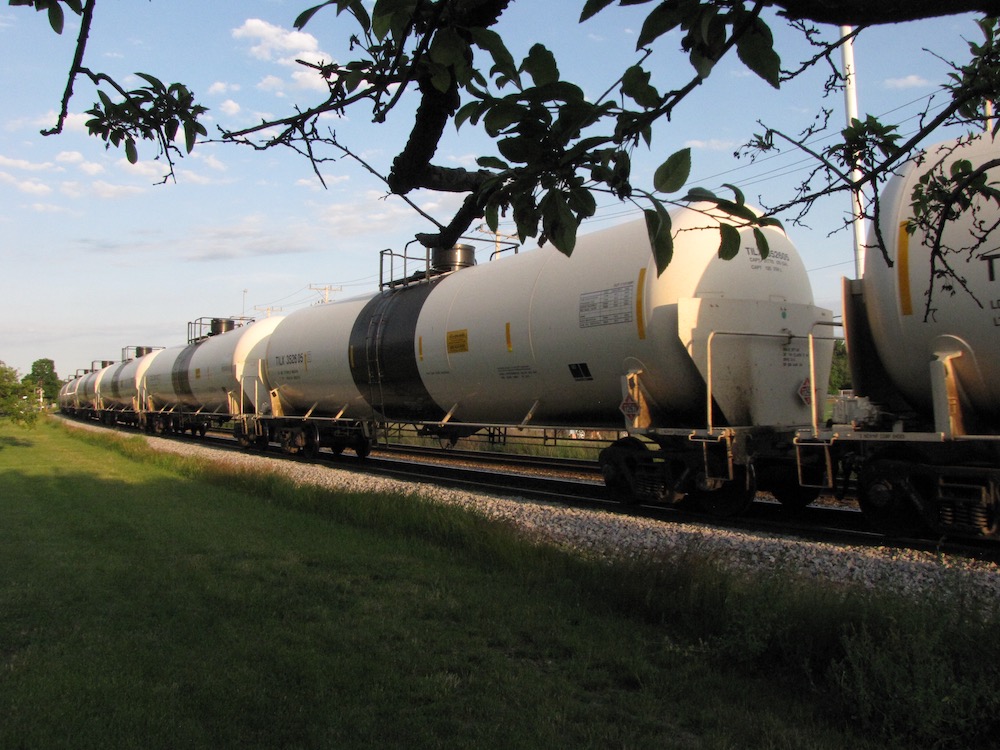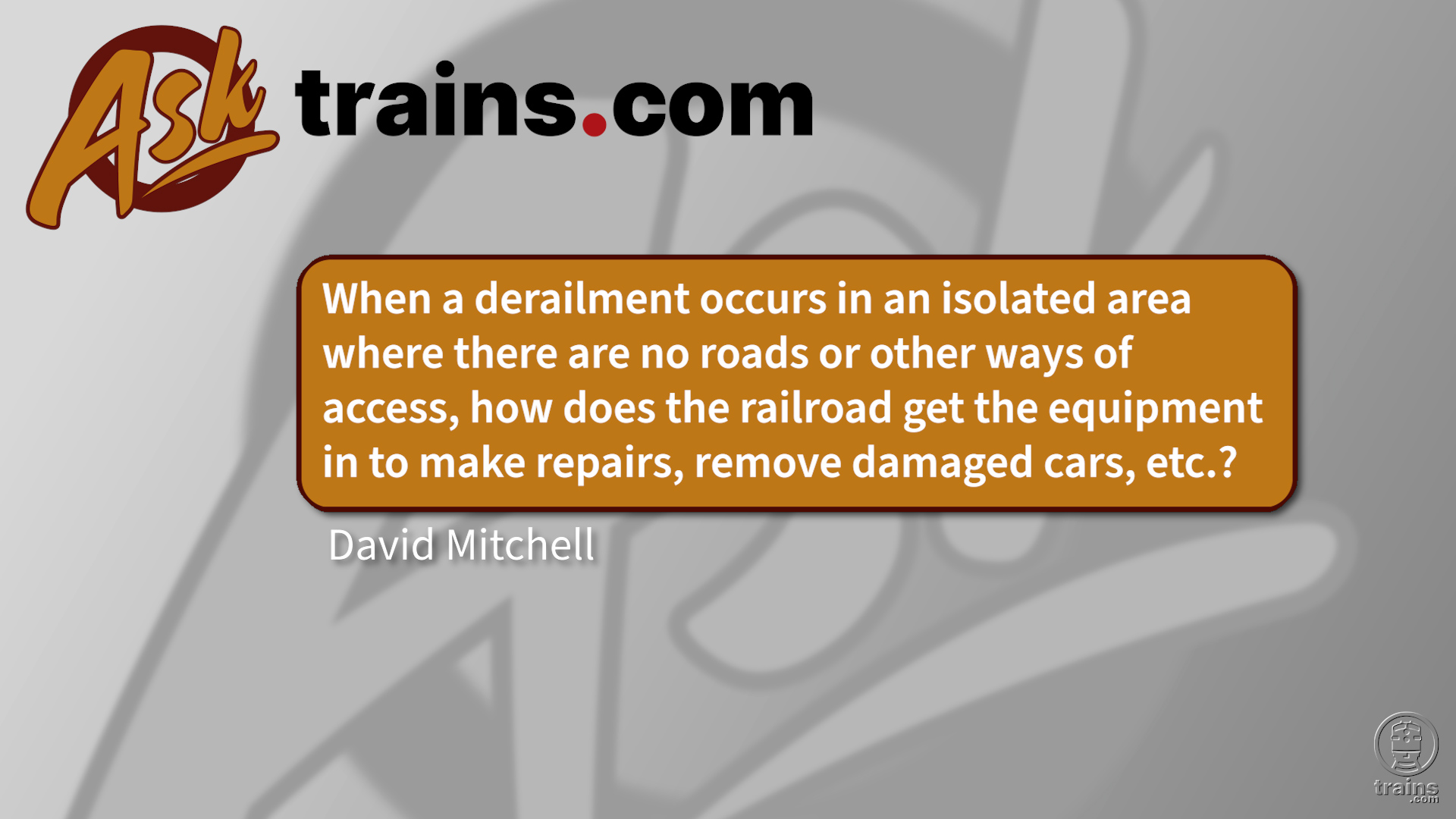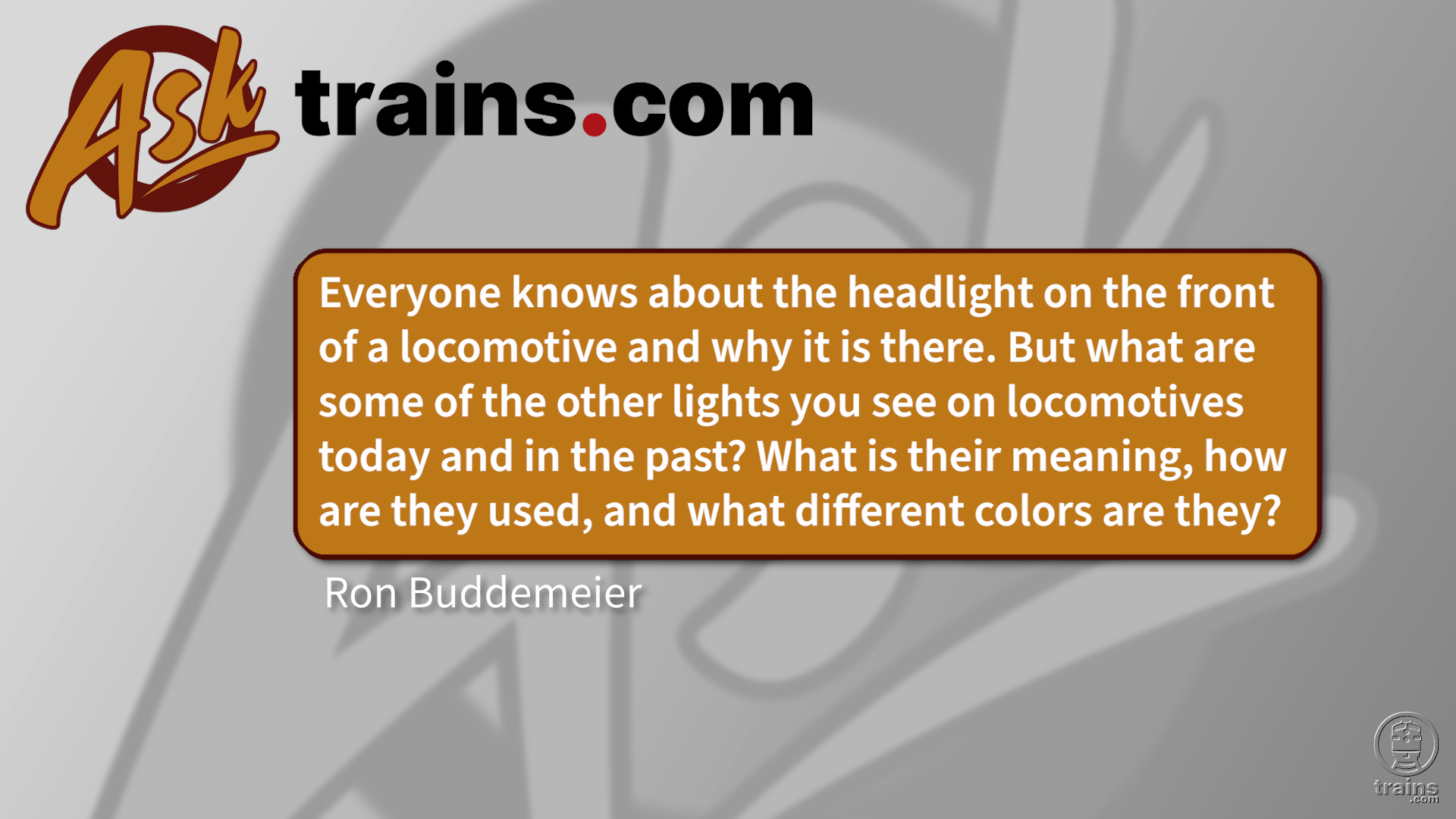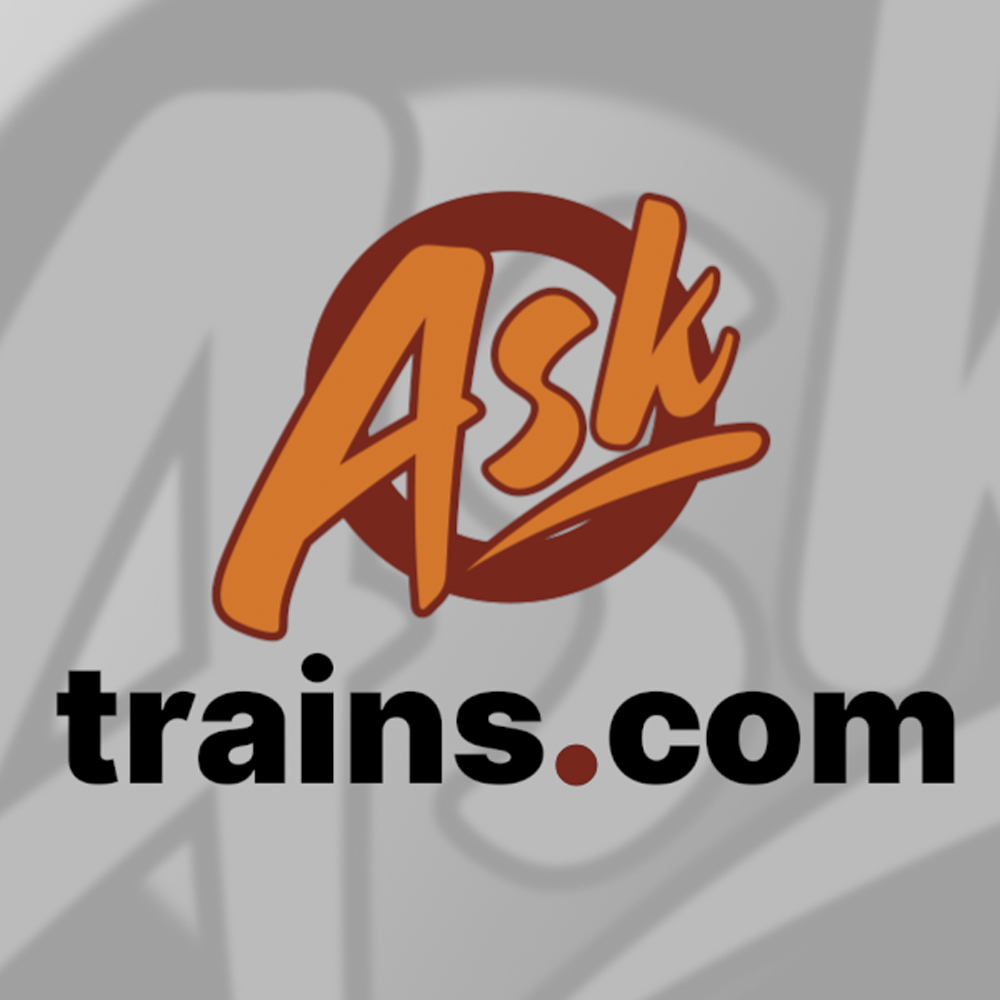– D. Wescott, Wilson, N.C.
A It is a 43,800-gallon, 526,000-pound (gross weight) car owned by DuPont, in series 29700-29769, built by ACF in 1968. Their DOT class is DOT111A100W1, meaning they are welded, non-pressurized cars. DuPont uses them to haul ethylene glycol, acetic acid, and tetrahydrofuran. These and similar cars were part of the “big car craze” of the 1960s, when manufacturers began turning out bigger and bigger cars because many shippers wanted larger cars and fewer of them. Because of safety concerns regarding large shipments of hazardous materials in tank cars, those built after November 1971 were limited to a maximum of 34,500 gallons and a gross rail load (see below) of 263,000 pounds. Although no more cars like this were built, some are still rolling; 65 in the series were still in service at the end of 2004.
– Jeff Wilson
– J.J. Murphy, Atlanta, Ga.
A Gross Rail Load (GRL) is the key. This is the maximum weight of a car, including the load and the car itself. The 100-ton and 110-ton capacity descriptions aren’t exact, rather rough estimates of the load limit, which varies by the light weight of each car. The maximum GRL for unrestricted interchange (four-axle cars) is 263,000 pounds (nominal 100-ton cars), and since the mid-1990s, most major routes have allowed a GRL of 286,000 (nominal 110-ton cars). To figure out a car’s GRL, add its load limit and light weight, both of which are stenciled on the car’s sides.
– Jeff Wilson
– Arnold Romberg, La Grange, Texas
A A double saw-by is a maneuver that enables two trains – both longer than the available passing siding – to get past each other. Here’s a play-by-play:
1. The westbound train leaves its excess cars on the main line east of the siding and pulls into the clear on the main line between the siding switches.
2. The eastbound train goes through the passing siding and onto the main until the front of its locomotive couples to the westbound’s excess cars. Its own rear end is still in the passing siding.
3. The truncated westbound proceeds forward along the now-clear main line until it clears the west siding switch by one-and-one-half train-lengths.
4. The eastbound backs up (taking the westbound’s excess cars) through the
passing siding but then leaves the westbound’s excess cars on the siding. It keeps backing up until it is again on the main, clear of the west siding switch.
5. The eastbound can then depart, using the main line. When it is clear, the westbound train backs into the siding to pick up its excess cars, then departs.
As you can see, though the procedure is possible, the number of moves required – and the coordination and time involved – make a double saw-by a move that is used only when there is no reasonable alternative.
– Jeff Wilson
– John Redinger, Williamsport, Pa.
A A hallmark of the former Pennsylvania Railroad and its allied roads (e.g., Long Island, Lehigh Valley, Norfolk & Western), these are known as position-light signals. Their indications were designed to represent those of a semaphore blade. Vertical is clear (which would be green on a standard searchlight or three-light signal); diagonal is approach (yellow); and horizontal is stop (red). Position-light signals were first used around 1915; their advantage was that even with a bulb out they would still give the proper indication. In the 1950s, some such signals, especially home signals at interlockings, were modified so the three horizontal lights were red. Similar signals, without the middle light and with red, yellow, and green lenses, called color-position-light signals, were used by Baltimore & Ohio and its onetime Midwest ally, the Alton Railroad. These days, all are gradually being replaced, usually with three-light signals.
– Jeff Wilson
– Tim Schultz, Dallas, Texas
A In a turbocharged engine, the turbocharger forces more air into the cylinders to enable the engine to burn more fuel, which results in more power. When the engineer moves the throttle to a higher notch, more fuel is injected, but it takes a moment for the turbo to increase its speed and force more air into the engine to keep the proper air-fuel mix ratio. During this lag time, the mix is rich (heavy on fuel), and if the fuel doesn’t burn cleanly, smoke results. This was most pronounced on older diesels, especially Alcos (EMDs used a blower instead of a turbo); modern locomotives have advanced fuel-injection systems and pollution controls.
– Jeff Wilson
– John Pagonis, Lombard, Ill.
A The St. Maries (say it Mary’s) River, reporting marks STMA, is a 70-mile line in northern Idaho running east and then south from a Union Pacific connection at Plummer to Bovill. It is former Milwaukee Road track (a short part of the Pacific Extension main line, plus a 47-mile branch), bought by Potlatch Corp. in 1980 to preserve service when MILW abandoned its routes west of Miles City, Mont. STMA’s main job is hauling logs and finished wood products for Potlatch. It does so with three EMD GP9s and two SW1200s, all ex-Milwaukee; it has almost 100 box cars.
– J. David Ingles
– Daniel M. Sullivan, Norfolk, Va.
A Booster engines, used on some steam locomotives to provide extra tractive effort when starting, could be located on the locomotive’s trailing truck or on a tender truck. These boosters were small two-cylinder engines geared to one axle through an idler gear that could be moved in and out of mesh. Tender boosters often used side-rods to carry the motion to the other axle. Boosters would disengage when speeds reached 15 to 20 mph.
– Jeff Wilson













